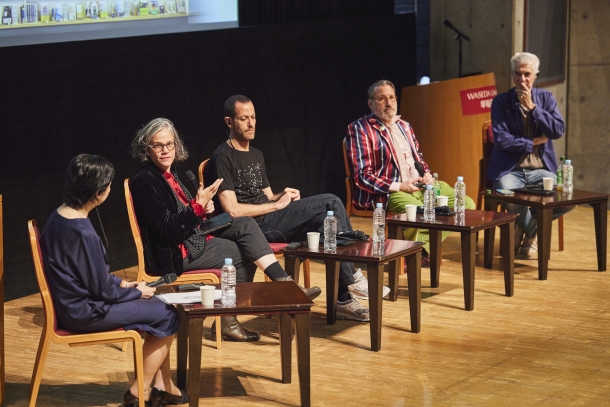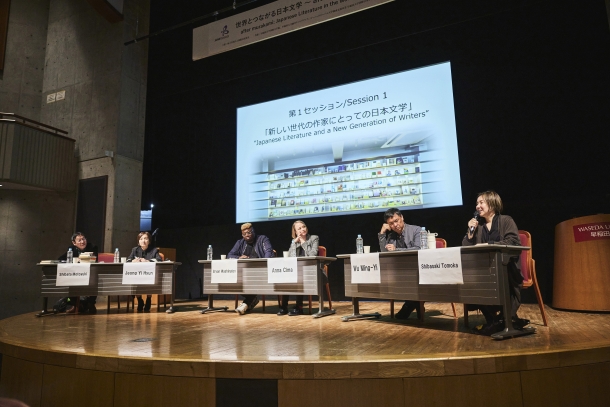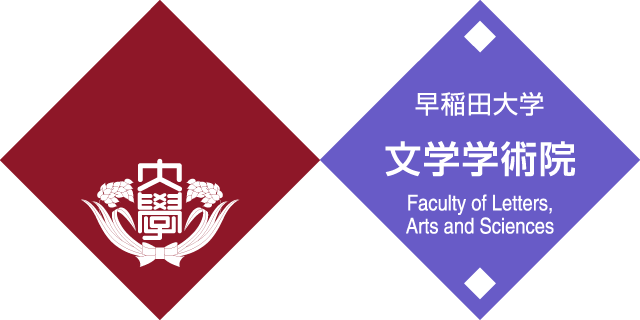- News
- Event Report: International Symposium “after murakami: Japanese Literature in the World Today”
Event Report: International Symposium “after murakami: Japanese Literature in the World Today”

- Posted
- 2024年3月26日(火)
It was in 2006 that ‘A Wild Haruki Chase: How the World is Reading and Translating Murakami’ was held. An international symposium and workshop, the event brought together authors, translators, and critics from around the world to exchange views on the appeal and translational challenges to be found in the works of Haruki Murakami. As part of his opening remarks for this more recent symposium, Kazuyoshi Umemoto, President of the Japan Foundation, began by explaining that this event represented a continuation of that earlier symposium. Jay Rubin, who also participated in the 2006 event, then gave an opening talk, in which he described how various Japanese novelists have been influenced by Murakami’s works, detailed the state of Murakami’s international reputation, and reaffirmed that the ‘Murakami phenomenon’ is still going strong.

(c) The Japan Foundation
In Session 1 – ‘Japanese Literature and a New Generation of Writers’ – authors from five countries discussed points of contact between their own creative endeavors and Japanese literature. This session was moderated by Motoyuki Shibata, who served as a guide during the 2006 event. First, Jeong Yi Hyun explained that it was from Murakami’s works that she had learnt how to express the connection between the world and the self. While touching on a range of topics, including Murakami’s oft-cited wall/ egg metaphor and Sampoong Department Store, one of her own works, she expressed her belief in the importance of a sustained commitment to artistic creation. Subsequently, Bryan Washington shared his recollections of Kafka on the Shore’s depiction of memory from the first time he read it. He also recollected how this novel, set in a land distant from and unfamiliar to his own life in Houston, had influenced him, before describing the universal appeal of literature. Next, Anna Cima discussed how she came across After Dark thanks to her pre-existing interest in Japanese literature. Based on Murakami’s existing presence there, as well as insights gleaned through her work as a translator, she envisioned a future in which increasing numbers of Japanese authors are read in the Czech Republic. Wu Ming-Yi, while emphasizing the uniqueness of Taiwan’s history as a Japanese colony before the Second World War and its subsequent long period of military rule, explained that the resultant culture laid the groundwork for the enthusiastic acceptance of Murakami’s works. Finally, Tomoka Shibasaki, building on the comments of the four prior speakers, noted that while participating in international gatherings as a Japanese-language writer in recent years, she has increasingly felt that, far from closing the distance between the reader and works originally written in a foreign language, translation can often make apparent the distance which separates them. In the final part of the discussion, each of the participants shared their thoughts on questions such as the literary significance of a ‘sense of place’, which can simultaneously impart both a sense of difference and a sense of sameness to the reader, despite having no physical existence itself.

(c) The Japan Foundation
Following a break for lunch, we heard from artists working in various mediums about how they approach Japanese literature, as part of Session 2, ‘Japanese Literature’s Inspiration to Other Art Forms’, which was moderated by Minako Okamuro. First, Amir Kliger and Inbal Pinto, who co-directed last year’s stage production of The Wind-Up Bird Chronicle, discussed the difficulty of attempting to reinterpret the novel for the stage while still drawing inspiration from the world of the original. On this point, Pinto drew on her background as a choreographer, explaining the particular importance of the body by referring to it, rather distinctively, as creating “an animal that is driven from the inside”. Meanwhile, Kliger, referencing the current situation in his home country of Israel, focused on the differences between narratives of violence and justice universal to the Western world and Japanese value systems, sharing his thoughts about how to express them in the realm of words. Next, Chip Kidd began by explaining his experiences as someone with a penchant for Japanese culture since childhood, before going on to discuss the horror novels of Koji Suzuki, the manga of Osamu Tezuka, the works of Haruki Murakami and his own work developing cover designs for their works. He described how, while covers may be a flat surface, he attempts to invoke the multilayered nature of Murakami’s works by superimposing multiple layers on top of one another. Finally, Pierre Földes discussed his experience of creating the animated film Blind Willow, Sleeping Woman which weaves together six of Murakami’s short stories. Showing clips from the film, he explained how, while remaining in dialogue with the original works, his inspiration was spurred on by the process of transferring the stories not into live action, but into the form of animation. The subsequent discussion focused on the difficulties, inherent to adaptation across media and language, which arise in the process of reinterpreting Murakami’s works in each creative’s unique art form.

(c) The Japan Foundation
In short, the ‘after murakami: Japanese Literature in the World Today’ international symposium used Murakami’s works as a jumping-off point to elucidate the potentialities and difficulties implicit in modern Japanese literature as informed by the unique perspectives of our various speakers.
Outline
| Project title | “after murakami: Japanese Literature in the World Today” |
|---|---|
| Organizer | The Japan Foundation |
| Co-organizers | The Waseda International House of Literature (The Haruki Murakami Library), The Yanai Initiative for Globalizing Japanese Humanities, Waseda University, The Global Japanese Studies Model Unit, Waseda University Top Global University Project |
| Date | Saturday, October 28, 2023; 10:30-17:00 [Doors open at 9:45] (JST) |
| Venue | Masaru Ibuka Auditorium – International Conference Center, Waseda University (Waseda Campus) |
| Format | In-person |
| Language | Japanese and English (Simultaneous interpretation available) |
| Participation fee | Free (Pre-registration is required. In case of too many applicants, participants will be decided by a draw.) |
- Tags
- Event Reports
